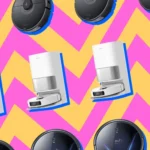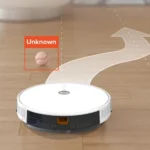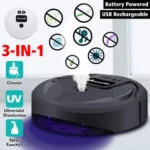So, you’ve recently purchased a smart vacuum cleaner to lighten your housework load and make life a little bit easier. You’ve read the instructions and set up the device, but for some reason, it doesn’t seem to be functioning as efficiently as it should. You’re not alone! Many people make common mistakes when using their smart vacuum cleaners, leading to frustrating results. But fear not, in this article, we’ll highlight the top mistakes to avoid, from setup to room preparation to cleaning. By the end, you’ll be a pro at using your smart vacuum cleaner, without encountering any issues. So, let’s dive in!
Mistakes with Setup and Maintenance
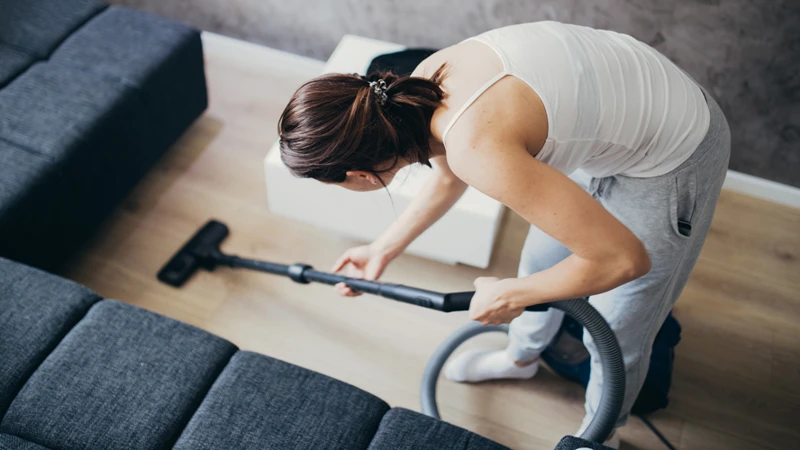
When it comes to using a smart vacuum cleaner, there are a few key setup and maintenance mistakes that can derail your cleaning efforts. Paying attention to the details can make all the difference in keeping your floors clean and your machine running smoothly. From scheduling cleaning times to cleaning the brushes, filter, and dustbin, we’ll explore common missteps and remedies to help ensure your smart vacuum is working effectively. So, let’s dive in and avoid these setup and maintenance blunders to maximize our smart vacuum experience! And if you’re having trouble with your smart vacuum not picking up dirt, be sure to check out our troubleshooting tips page to address any issues.
Not Setting Up Boundaries or Scheduling Cleaning Times
One of the biggest mistakes people make when using smart vacuum cleaners is not setting up boundaries or scheduling cleaning times. This is especially important if you have a large or multi-story house. Without boundaries, your smart vacuum cleaner may end up getting stuck in areas you don’t want it to go, like under furniture or in tight spaces. Not scheduling cleaning times can also be a problem, as you may forget to run your vacuum at all, defeating the purpose of owning a smart vacuum cleaner in the first place.
To avoid these issues, it’s important to take advantage of the boundary-setting and scheduling features on your smart vacuum cleaner. Most models come with boundary markers that you can place around your home to keep the vacuum in certain areas. You can also use the scheduling feature to set up regular cleaning times that work for you. This way, your smart vacuum cleaner can clean your home even when you’re not there, making your life easier and your home cleaner.
But, it’s also important to keep in mind that your smart vacuum cleaner is not perfect. Even with boundaries and schedules set up, it can still encounter problems such as not picking up dirt or experiencing technical difficulties. In these cases, it’s crucial to troubleshoot and address the issue right away, so that your vacuum cleaner can continue to function properly and keep your home clean.
Overall, setting up boundaries and scheduling cleaning times should be a top priority when using a smart vacuum cleaner. It will give you the most efficient and effective cleaning experience, and make your life much easier. However, it’s important to remember that you still need to take care of your smart vacuum cleaner by cleaning the brushroll and checking the suction periodically to ensure it’s functioning properly.
Forgetting to Empty the Dustbin or Replace the Filter
When it comes to maintaining your smart vacuum cleaner, forgetting to empty the dustbin or replace the filter can be a common mistake that can result in poor performance and even damage to your device. If the dustbin is full, suction power will be lost as the debris clogs the filter and the buildup can cause damage to the motor over time.
To prevent this issue, it’s important to regularly check and empty the dustbin, especially after each cleaning cycle. It’s also important to replace the filter periodically, depending on your smart vacuum’s recommendations. Some models may require a filter replacement after several uses, while others can go for several months before needing to be replaced.
Here are some tips to help you remember to empty the dustbin or replace the filter:
- Set a reminder: Use your phone or a calendar app to set a reminder to check and empty the dustbin or replace the filter on a regular basis.
- Keep extra filters on hand: Purchase extra filters when you buy your smart vacuum so you have them ready when you need them.
- Check the suction: If you notice that your smart vacuum’s suction is not as strong as it used to be, it may be time to empty the dustbin or replace the filter. You can also do a quick suction check to determine if there is a blockage in the device.
By regularly emptying the dustbin and replacing the filter, you’ll ensure that your smart vacuum cleaner will maintain its suction power and keep running smoothly.
Not Cleaning the Brushes or Checking for Clogs
When it comes to using your smart vacuum cleaner, not cleaning the brushes or checking for clogs is a common mistake that could lead to decreased cleaning performance and even damage to your machine. It’s important to regularly inspect and maintain the brushes and filters of your vacuum cleaner. Here’s why:
Over time, dust, hair, and other debris can get stuck in the brushes and bristles of the vacuum cleaner, causing them to become clogged. This can significantly impact the vacuum’s suction ability and make it less effective at cleaning your floors. In some cases, it might even cause the vacuum to stop working altogether.
To prevent this from happening, make sure to regularly clean and remove debris from the brushes and bristles of your vacuum cleaner. Most smart vacuum cleaners come with cleaning tools that you can use to remove hair and debris from the brushes. Additionally, you can use a pair of scissors or a brush to loosen and remove any tangled hair or fibers.
It’s also important to check for clogs in the vacuum cleaner’s filters and hoses. If you notice that the suction power of your vacuum has decreased, it’s possible that there is a blockage somewhere in the machine. Take the time to inspect the filters and hoses for any debris or dirt that might be obstructing the airflow.
To make it easier for you to stay on top of your vacuum cleaner’s maintenance, here’s a table summarizing the steps you can take to avoid the mistake of not cleaning the brushes or checking for clogs:
| Steps to Take | How Often |
|---|---|
| Clean the brushes and bristles of your vacuum cleaner | After every use |
| Inspect the filters and hoses for clogs | Once a month |
| Replace the filters as needed | As recommended by the manufacturer |
By following these steps, you can ensure that your smart vacuum cleaner is always running smoothly and providing the best possible cleaning performance. Don’t neglect the maintenance of your machine and avoid the frustrating mistake of not cleaning the brushes or checking for clogs.
Mistakes with Room Preparation
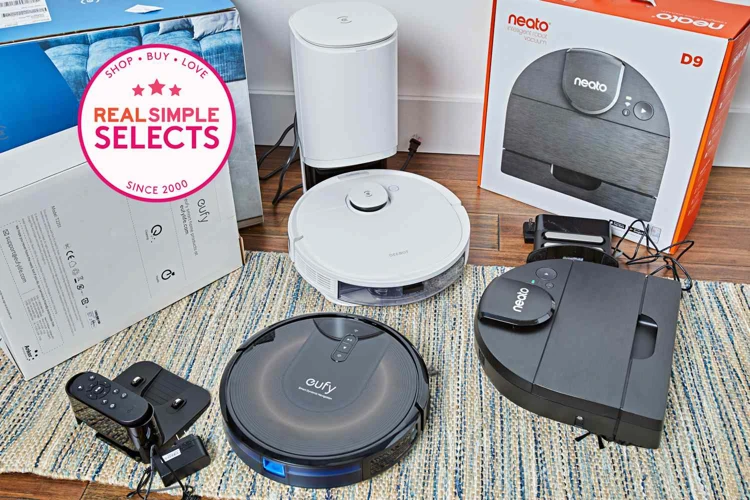
Preparing a room for a smart vacuum cleaner can seem like a breeze, but it’s not always as straightforward as it appears. In fact, many homeowners may not even realize the mistakes they make when preparing their space for a robot vacuum to clean. Let’s dive into some common errors to avoid when setting up your room for your smart vacuum cleaner to work its magic.
Leaving Clutter on the Floor
One of the biggest mistakes people make when using their smart vacuum cleaners is leaving clutter on the floor. A cluttered floor not only makes it difficult for the vacuum to clean properly, but it also increases the risk of damage to the vacuum or the objects on the floor. To avoid this mistake, it’s important to keep the floor as clear as possible before starting the cleaning cycle.
Here are some examples of common types of clutter that can cause issues when using a smart vacuum cleaner:
| Type of Clutter | Potential Issues |
|---|---|
| Furniture | If furniture is left on the floor, the smart vacuum cleaner may not be able to clean around it or may bump into it, causing damage. |
| Toys | Toys left on the floor can clog the vacuum’s brushes or cause damage if they get stuck in the mechanism. |
| Clothes or Shoes | Clothes or shoes left on the floor can get tangled in the vacuum’s brushes, causing clogs or damage. |
| Papers or Books | Loose papers or books on the floor can get sucked up by the vacuum and cause clogs or damage to the mechanism. |
It’s important to keep the floor as clear as possible to ensure that the smart vacuum cleaner can clean effectively and without causing any damage. By taking a few minutes to tidy up before starting the cleaning cycle, you can prevent this common mistake and ensure that your smart vacuum cleaner lasts for years to come.
Leaving Doors Open or Pets Loose
One of the most common mistakes people make when using their smart vacuum cleaner is leaving doors open or pets loose. This can significantly affect the efficiency of the cleaning process, as well as potentially damage the vacuum cleaner.
If you have pets, it’s important to ensure that they are kept in a separate area while the vacuum cleaner is running. Pets can easily become frightened or agitated by the noise and movement of the vacuum cleaner, which can lead to them unintentionally knocking over the vacuum or interfering with its cleaning path. This can cause unnecessary stress for both your pet and your vacuum cleaner.
Similarly, leaving doors open can lead to a number of issues. For example, a door left ajar can cause the vacuum cleaner to miss areas of the room or become stuck in a particular area. Additionally, it can cause the vacuum cleaner to move from room to room in a less efficient manner, meaning that some areas may be left partially or completely uncleaned.
To avoid these issues, it’s important to keep pets in a separate area while the vacuum cleaner is running, and to make sure that all doors are closed in the rooms where the vacuum cleaner is cleaning. This will help to ensure that the vacuum cleaner is able to clean in a more efficient and thorough manner, and will help to prevent any unnecessary damage or issues with the vacuum cleaner.
Another helpful tip is to use virtual boundaries to restrict the areas that the vacuum cleaner can clean. This is particularly useful if you have pets or open-plan living areas, as it allows you to keep your pets or cluttered areas separate from the vacuum’s thorough cleaning path.
By avoiding the mistake of leaving doors open or pets loose, you can help to ensure that your smart vacuum cleaner is able to clean your home efficiently and without any issues.
Leaving Cords or Small Objects on the Floor
One common mistake people make when using their smart vacuum cleaner is leaving cords or small objects on the floor. This can lead to the vacuum cleaner getting stuck, damaging the object or cord, or cause the vacuum cleaner to miss cleaning that specific area.
Cords are one of the most common objects left on the floor. Before starting the cleaning cycle, ensure that all cords are tucked away, secured or unplugged. It’s also important to ensure that the vacuum cleaner’s cord is not a tripping hazard.
Another mistake is leaving small objects such as toys, pins, paper clips, and other debris on the floor. These small objects can get trapped in the vacuum cleaner’s brushes or wheels causing them to stop working efficiently or damaged. It’s best to perform a quick check of the room before starting the cleaning cycle, picking up any small objects and making sure they are stored away in a safe place.
To avoid this mistake, create a system that ensures that all small objects and cords are kept off the floor. One such system is by using a cord and cable box to keep all cords neatly tucked away. This is especially helpful for small spaces where cords can become a tripping hazard.
It’s also important to teach children and other family members about the dangers of leaving cords and small objects on the floor. Educate them on the proper way of maintaining the room before starting the cleaning cycle. This will help prevent future accidents that may cause damage to the vacuum cleaner or harm to individuals in the household.
| Mistakes to Avoid: | Tips to Follow: |
|---|---|
| Leaving cords on the floor | Unplug or securely tuck away cords before starting the cleaning cycle. Use cord and cable boxes to contain and organize cords. |
| Leaving small objects on the floor | Perform a quick check of the room before starting the cleaning cycle, picking up any small objects and making sure they are stored away in a safe place. |
Leaving cords and small objects on the floor can lead to various problems during the cleaning cycle. By following the tips provided above, you can reduce the risk of these problems and ensure that your smart vacuum cleaner operates efficiently. Remember to educate your family members and create a system that keeps all small objects and cords off the floor.
Mistakes During Cleaning
When it comes to cleaning with a smart vacuum cleaner, it’s important to avoid mistakes during the cleaning process that could ruin your efforts. Unfortunately, many people make mistakes during the cleaning cycle that can actually work against the efficiency of the machine. In this section, we will explore some of the most common mistakes that people make when cleaning with their smart vacuum cleaner, and how to avoid them. So, let’s dive in and take a closer look at what you should avoid doing during your next cleaning session.
Interrupting the Cleaning Cycle
We’ve all been there – you start your smart vacuum cleaner and then remember that you need to run a quick errand or take a phone call. It can be tempting to pause or stop the cleaning cycle, but doing so can actually cause more harm than good, resulting in a less effective cleaning job overall.
Why Interrupting the Cleaning Cycle is a Mistake
When you interrupt the cleaning cycle of your smart vacuum cleaner, you essentially disrupt its entire cleaning system. This can lead to missed spots or areas that are not cleaned as thoroughly as they should be. Additionally, stopping and restarting the cleaning cycle can also cause extra wear and tear on the vacuum’s motor, decreasing its lifespan.
How to Avoid Interrupting the Cleaning Cycle
The best way to avoid interrupting the cleaning cycle of your smart vacuum cleaner is to plan ahead. Schedule cleaning times when you know you’ll be able to let the vacuum run uninterrupted for a full cycle. If you do need to pause the cycle for any reason, try to restart it from where it left off rather than completely stopping and restarting. This can help minimize missed spots and maintain the vacuum’s cleaning efficiency.
Another way to avoid interrupting the cleaning cycle is to choose a day or time when you know you’ll have fewer interruptions. For example, scheduling the cleaning cycle for a time of day when you’re not typically at home, or while children or pets are napping, can help ensure that the cycle runs smoothly without interruptions.
The Bottom Line
While it can be tempting to interrupt the cleaning cycle of your smart vacuum cleaner, doing so can actually do more harm than good in the long run. By planning ahead and scheduling cleaning times during less hectic periods, you can help maintain the vacuum’s efficiency and prolong its lifespan. Remember, the key to a clean home is consistency, so make sure to let your smart vacuum cleaner do its job uninterrupted.
| Do | Don’t |
|---|---|
| Plan ahead and schedule cleaning times when you know you’ll be able to let the vacuum run uninterrupted for a full cycle. | Pause or stop the cleaning cycle unless it’s absolutely necessary. |
| Restart the cleaning cycle from where it left off rather than completely stopping and restarting. | Choose a time of day when you know there will be a lot of interruptions. |
| Choose a day or time when you know you’ll have fewer interruptions. | Forget to set boundaries to prevent the vacuum from going into areas where it shouldn’t be. |
Not Spot-Cleaning High-Traffic or High-Dirt Areas
One of the most common mistakes people make when using their smart vacuum cleaner is not spot-cleaning high-traffic or high-dirt areas. While the vacuum might be doing a great job of cleaning the rest of your home, it’s important to pay extra attention to areas that receive a lot of foot traffic or are otherwise prone to accumulating dirt and debris.
Here are some high-traffic areas to keep in mind:
- The entryway and foyer
- The hallway
- The living room
- The kitchen
- The bathroom
These areas tend to accumulate dirt and debris quickly, so it’s important to give them a little extra attention during your cleaning routine. If you notice that your smart vacuum cleaner isn’t doing a good job in these areas, you may need to go back over them manually with a handheld vacuum or broom.
Here are some high-dirt areas to keep in mind:
- The kitchen floor, especially around the stove and sink
- The bathroom floor, especially around the toilet and shower
- The area around the litter box, if you have cats
- The area around your pet’s food and water bowls, if you have pets
These areas tend to require more thorough cleaning than other parts of your home. If your smart vacuum cleaner isn’t able to get all the dirt and debris in these areas, you may need to manually scrub or sweep them.
Remember, while a smart vacuum cleaner can make cleaning your home easier, it’s still important to give certain areas extra attention to make sure they’re getting as clean as possible. By spot-cleaning high-traffic and high-dirt areas, you’ll be able to keep your home looking and feeling clean and tidy.
Walking on the Floor During Cleaning
When using a smart vacuum cleaner, it’s important to avoid certain mistakes that can result in subpar cleaning performance or even damage to your floors. One of the most common mistakes that many people make is walking on the floor while the robot vacuum is in operation.
Why is walking on the floor a mistake?
Walking on the floor while your smart vacuum cleaner is in operation can cause several problems. First, you may inadvertently kick or move objects on the floor, such as toys or cords, which can disrupt the cleaning cycle or cause the vacuum to get stuck. Additionally, walking on the floor can prevent the vacuum from effectively cleaning the area you just stepped on, as the machine may have to redirect its path to avoid you. This can lead to missed spots and uneven cleaning performance.
How to avoid walking on the floor during cleaning
To avoid walking on the floor while your robot vacuum is in operation, there are a few things you can do. First, schedule your cleaning cycles for times when you’re not likely to be walking around your home. This might mean running the robot vacuum early in the morning or late at night when everyone is asleep. Alternatively, you can set up virtual boundaries to prevent the vacuum from cleaning certain areas where you’re likely to be walking.
If you do need to walk on the floor while the robot vacuum is in operation, be mindful of where you step and try to avoid kicking or moving objects that could disrupt the cleaning cycle. You could also consider pausing the vacuum before you cross its path and then resuming its cleaning cycle once you’ve passed.
Final thoughts
Walking on the floor while your smart vacuum cleaner is in operation may seem harmless, but it can have a negative impact on the quality of your cleaning results. By avoiding this common mistake and taking steps to prevent disruptions during cleaning cycles, you can ensure that your robot vacuum performs at its best and keeps your floors looking spotless.
Conclusion
In conclusion, using a smart vacuum cleaner can be a game-changer for keeping your home clean and tidy. However, it’s important to avoid common mistakes that can hinder its effectiveness. Remember to set up boundaries and scheduling cleaning times to ensure that your smart vacuum cleaner is working efficiently. Regular maintenance such as emptying the dustbin and cleaning the brushes can also prolong the life of your device while keeping it functioning at its best.
Before starting a cleaning cycle, make sure that the room is prepared by removing any clutter, cords, or small objects that could interfere with the vacuum’s operation. Also, take note of any pets or open doors that could distract or confuse the device.
During the cleaning process, avoid interrupting the cycle and walking on the floor to prevent the vacuum from bumping into obstacles or missing spots. It’s also essential to spot-clean high-traffic or high-dirt areas regularly to ensure a deep clean.
By following these simple tips and avoiding common mistakes, you can optimize the performance of your smart vacuum cleaner and streamline your cleaning process. So, go ahead and give your home the ultimate cleaning experience with your smart vacuum cleaner today!
Frequently Asked Questions
How often should I replace the filter in my smart vacuum cleaner?
You should replace the filter in your smart vacuum cleaner roughly once every three to six months, depending on usage.
What happens if I don’t clean the brushes on my smart vacuum cleaner?
If you don’t clean the brushes on your smart vacuum cleaner, they could become clogged and reduce the vacuum’s suction power. This could result in less effective cleaning.
Can I use my smart vacuum cleaner on all types of floors?
Generally, smart vacuum cleaners can be used on all types of floors, but it’s important to check the manufacturer’s instructions to ensure that it’s safe to use on hard floors or high-pile carpets.
How long does it take to charge a smart vacuum cleaner?
The charging time for a smart vacuum cleaner will vary depending on the model, but most take between two to six hours to fully charge.
Can I control my smart vacuum cleaner with a mobile app?
Yes, most smart vacuum cleaners can be controlled using a mobile app. This allows you to set cleaning schedules, check battery levels, and even control the vacuum remotely.
Can I use my smart vacuum cleaner to clean stairs?
Most smart vacuum cleaners are not suitable for cleaning stairs due to their design. However, some models come with separate attachments that allow you to clean stairs effectively.
What should I do if my smart vacuum cleaner stops working?
If your smart vacuum cleaner stops working, the first thing you should do is check the user manual. Often, there will be troubleshooting tips that can help you resolve the issue. If you’re still having problems, contact the manufacturer for assistance.
How often should I clean the dustbin in my smart vacuum cleaner?
You should clean the dustbin in your smart vacuum cleaner after every use. This will help to prevent dust and debris from building up and impacting the vacuum’s suction power.
What is the maximum run time for a smart vacuum cleaner?
The maximum run time for a smart vacuum cleaner will vary depending on the model. Some can run for up to 120 minutes, while others have a much shorter run time.
Can I add scents or cleaning solutions to my smart vacuum cleaner?
No, you should not add scents or cleaning solutions to your smart vacuum cleaner. The vacuum is designed to pick up dust and debris, and adding anything else could damage the machine or impact its suction power.

